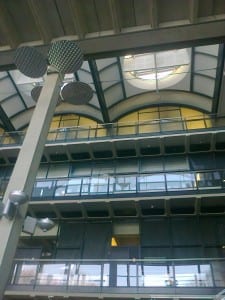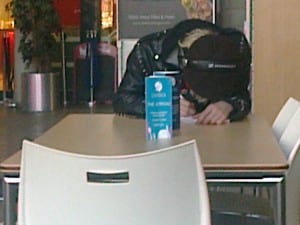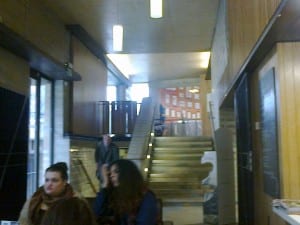To sit down in a café and really look around is something. Usually you avert gazes, you keep your eyes to your food, your friends, anything that is yours. To actually sit and look around a place you have been in a thousand times before and really look at is something.
When does anyone sit in the café to look at the building?
To look at how high the ceiling actually is, how tall the building is.

When finally looking at the people around you, you notice the boy drawing and how engrossed he is in his work, you can’t see what he is colouring, so you imagine he is drawing himself fighting a dragon.

To finally wrench yourself away from your laptop, your work, your stress and see that the café actually has a beautiful view of the city. Funny how you never notice that before until you’re told too, until you are told to really look around you.

To hear the interesting lives of people sitting next to you is strange, when usually you go so far out of your way not to overhear and be rude.
“I sold my boats, I got more than I wanted for it and now I have a month. I am living here, on the river, least I have a caravan to fall back on. “
“It’s not a cob, it’s a roll.”
“I love ear-wigging”
“Oh your egg is gone”
“I have egg on my forehead.”
When you then finally look up from your laptop, you notice how busy it truly is, how in this university there are going to be hundreds of people you may only see once, or at least remember only seeing once.

All of this from simply sitting in a cafe for an hour and a half.









